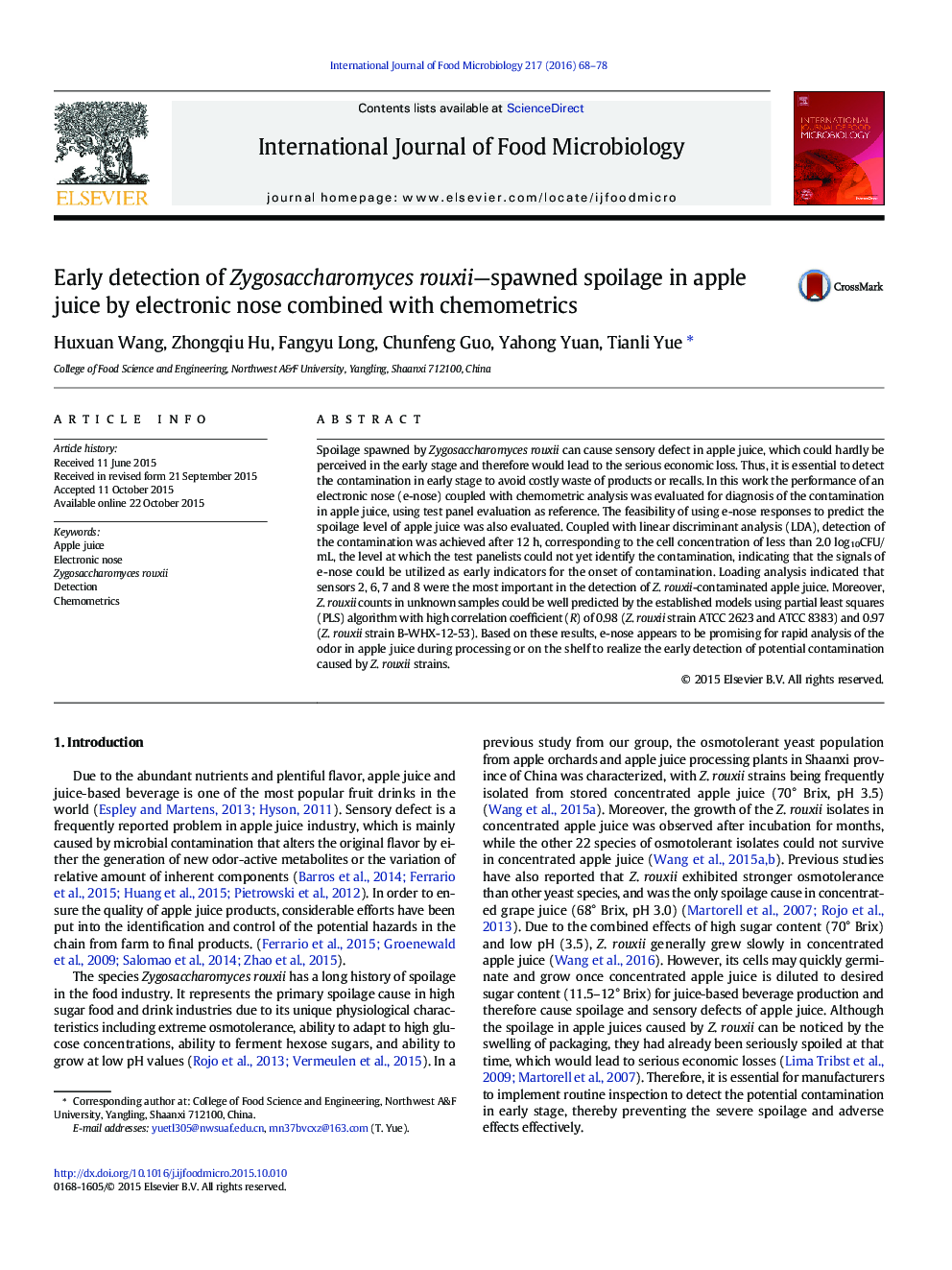| Article ID | Journal | Published Year | Pages | File Type |
|---|---|---|---|---|
| 4366398 | International Journal of Food Microbiology | 2016 | 11 Pages |
•E-nose could discern Z. rouxii contamination in apple juice after 12 h.•E-nose was more sensitive than test panel evaluation for detection of Z. rouxii contamination.•The count of Z. rouxii could be well predicted by e-nose response using PLS algorithm.
Spoilage spawned by Zygosaccharomyces rouxii can cause sensory defect in apple juice, which could hardly be perceived in the early stage and therefore would lead to the serious economic loss. Thus, it is essential to detect the contamination in early stage to avoid costly waste of products or recalls. In this work the performance of an electronic nose (e-nose) coupled with chemometric analysis was evaluated for diagnosis of the contamination in apple juice, using test panel evaluation as reference. The feasibility of using e-nose responses to predict the spoilage level of apple juice was also evaluated. Coupled with linear discriminant analysis (LDA), detection of the contamination was achieved after 12 h, corresponding to the cell concentration of less than 2.0 log10CFU/mL, the level at which the test panelists could not yet identify the contamination, indicating that the signals of e-nose could be utilized as early indicators for the onset of contamination. Loading analysis indicated that sensors 2, 6, 7 and 8 were the most important in the detection of Z. rouxii-contaminated apple juice. Moreover, Z. rouxii counts in unknown samples could be well predicted by the established models using partial least squares (PLS) algorithm with high correlation coefficient (R) of 0.98 (Z. rouxii strain ATCC 2623 and ATCC 8383) and 0.97 (Z. rouxii strain B-WHX-12-53). Based on these results, e-nose appears to be promising for rapid analysis of the odor in apple juice during processing or on the shelf to realize the early detection of potential contamination caused by Z. rouxii strains.
